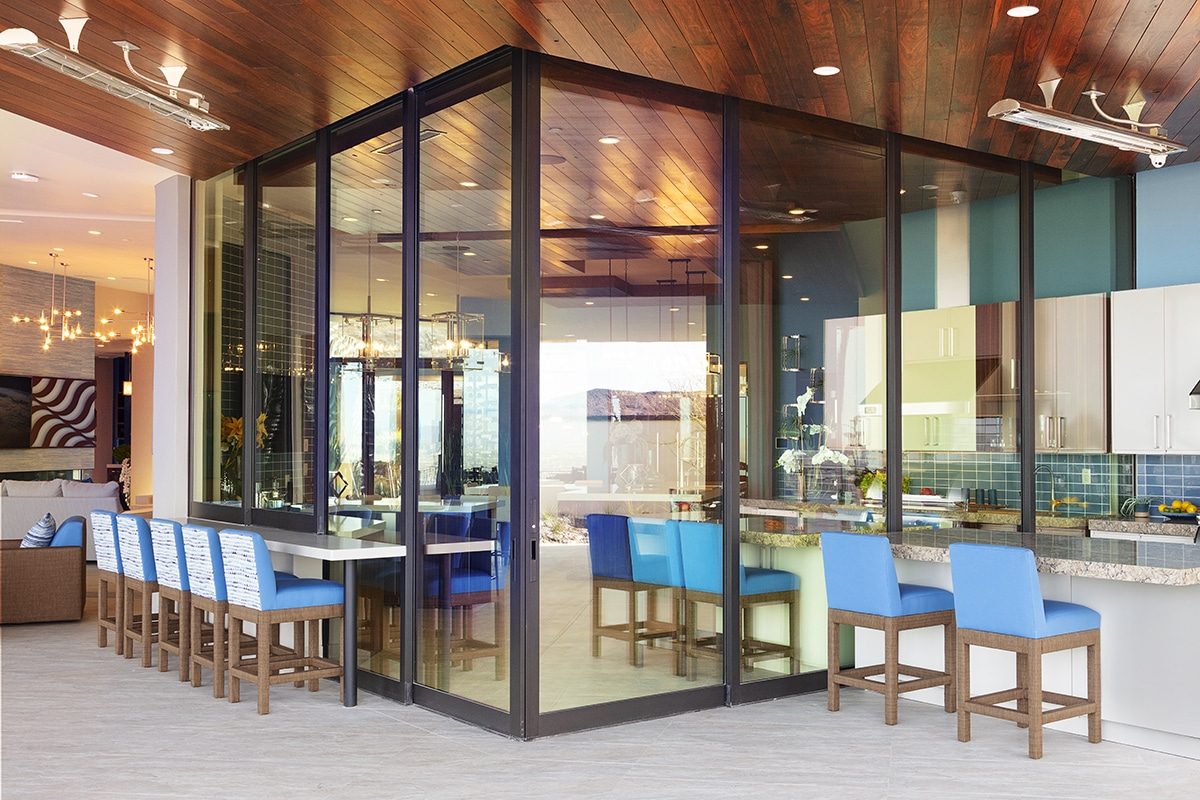Flexible products meet energy efficiency
When it comes to meeting Title 24 requirements, Western Window Systems provides flexible solutions. We consider current and future Title 24 prescriptive thermal values when we design and update each product.
Meeting Prescriptive Ratings
With the next Title 24 iteration coming in 2026, Western Window Systems is preparing for the new lower thermal values, while keeping in mind today’s U-factor and Solar Heat Gain Coefficient (SHGC) requirements.
“What are the current prescriptive numbers and what are the new ones coming out? How flexible can we make the product so that it can achieve the next version of Title 24? And do we have the flexibility of adding foam or a different glass combination?”
These are all questions Kevin Vilhauer, VP of Engineering at Western Window Systems, and his team take into account when developing current and future products. When designing new windows and doors, we consider Title 24 prescriptive values for both the U-factor and SHGC.
Our Performance Line products allow architects to go as big as possible while still meeting the prescriptive numbers through the right combination of models, configurations and options. When a combination of window and door products will not meet prescriptive thermal values, the performance method comes into play.
Designing for the Building Envelope
“Through a combination of insulation, HVAC, windows, doors, and other design criteria, architects can specify a combination that’s the least expensive for them,” Vilhauer said. “Our sales representatives might recommend Performance Line products mixed in with Classic Line products in some sort of combination. Maybe more fixed windows and less operable windows.”
The Classic Line is a great choice for architects following the performance method, and our sales representatives are experts in choosing the right combination of products. Combining Classic and Performance Line products allows for flexibility when determining the energy envelope of a building.
Western Window Systems is also exploring new industry technology to make our products as energy efficient as possible. Innovations in glass, like the Thin Triple Insulated Glass Unit glass created by PGT Innovations in partnership with Corning, will allow products to meet prescriptive values even when architects use the performance method.
“We can get those products to the prescriptive level, or at least get them closer, so that when an architect uses the performance calculation, they don’t have to upgrade as many other building features to still specify a multi-slide door,” Vilhauer said.
Working with Aluminum
Unlike PVC, aluminum products can be slimmer and bigger without changing energy efficiency. As PVC products become larger, the vinyl needs to be wrapped around metal, which in turn reduces energy efficiency.
“The advantage of aluminum over PVC is that aluminum can be built much larger and thinner while still maintaining good thermal performance,” Vilhauer said. “Our Performance Series was designed to be built in very large sizes to meet architectural needs and meet high design pressures while still achieving good thermal values. This series also has many available glazing options to hit specific thermal targets.”
Many architects choose to work with PVC, or vinyl windows and doors, over aluminum in favor of energy efficiency. At WWS, our aluminum products can be thermally as good as PVC products with technology like different thermal break types in the frame and sash and can be larger without sacrificing energy performance. And with new thermal break innovations being added to our Series 7600 Multi-Slide Door, our Performance Line multi-slide door can go even larger than before.
Bringing a modern touch to a home has never been easier with the use of aluminum doors and windows. The performance and aesthetic speak for themselves.
Learn more about Title 24 and energy efficiency, and check out the Performance Line.

